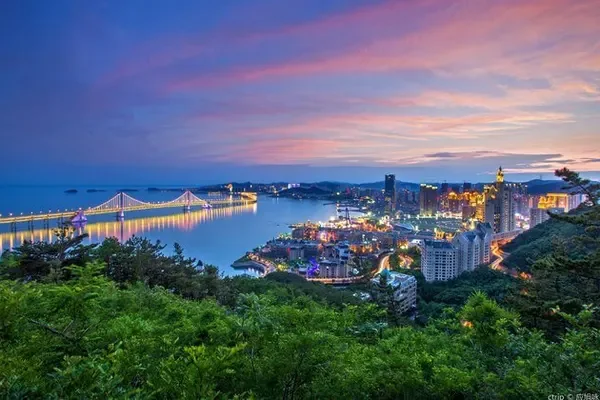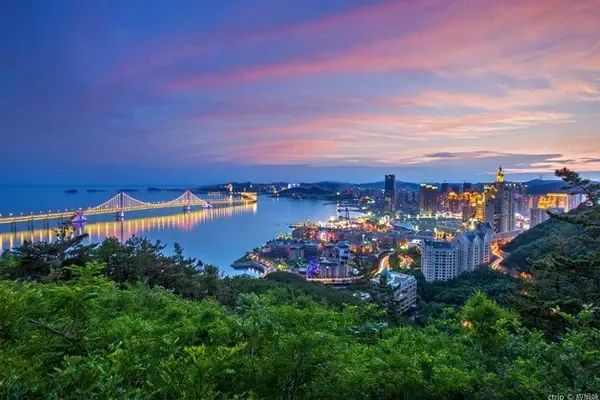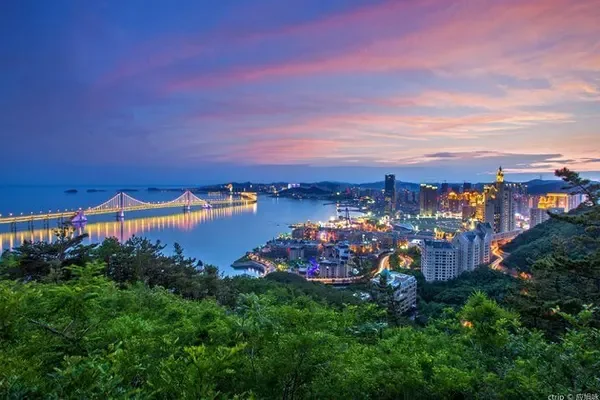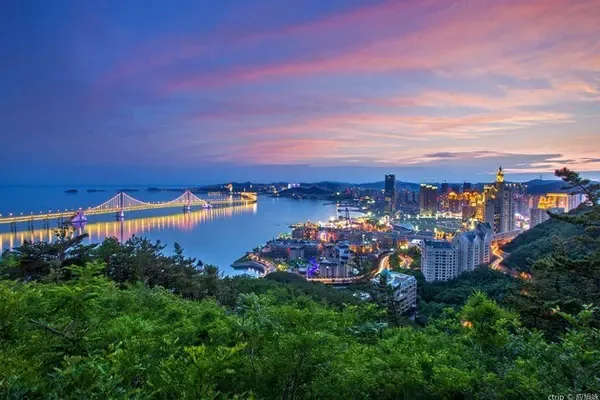The Pamir Plateau is the only place where the Silk Road was opened up since Emperor Wu of the Han Dynasty. It is located at the western end of my country and the southeast of Central Asia, spanning my country, Tajikistan and Afghanistan. At present, except that the eastern slope is under the jurisdiction of our country, and the Wahan Pamir belongs to Afghanistan, most of them belong to Tajikistan, so the Pamirs are not among the four major plateaus in my country. my country borders Tajikistan and Afghanistan on the Tajik Autonomous County of Taxkorgan. From Kashgar to Taxkorgan, there is the China-Pakistan Friendship Highway, namely National Highway 314, which is 288 kilometers long and takes one day.
At 9:30 am on the 16th, just as the sun got up, we set off from Kashgar. First go to the service hall of the Kashgar Public Security Bureau to apply for a border pass. On the China-Pakistan Friendship Highway, first all the way to the west, then turn to the south, traveling along the winding Gezi River Valley. After driving for more than an hour, mountains rose up on both sides of the road. The mountains were lead gray, iron gray and brown. The Gaizi River roared and cut deep cracks in the Kunlun Mountains. This is the Gaizi Grand Canyon. The China-Pakistan Friendship Highway is like a beautiful ribbon, passing through the canyons and fluttering on the Pamirs.
Gazi Grand Canyon is the southwestern gateway of Pamir. The Gazi border checkpoint in Pamir is located at the narrowing throat of the canyon. Arriving at the checkpoint, people and vehicles are separated. Except for the driver, everyone has to get off the car, enter the inspection hall, pass the security check, and pass the verification with their ID card and border guard pass. After exiting the checkpoint, drive for about another hour, pass a Gongger Hydropower Station called Bulunkou, and soon arrive at the first scenic spot in the itinerary, Baisha Mountain in Bulunkou Township, Akto County and Baisha Lake.
Baisha Lake is a plateau flat lake with an area of 44 square kilometers. It is said that this is the Liusha River where Monk Sha appeared in "Journey to the West". On both sides of the lake stands Gongger Jiubie Peak, and next to the lake is Baisha Mountain, which is composed of more than ten hills of different sizes. The mountain embraces a large area of white and fine sand. Under the blue sky and white clouds, the white sand mountains and the blue lake are close to each other. The sand moves with the water, and the water flows away. The snow-capped mountains and Baisha are like a wedding dress draped on a bride, making Baisha Lake quiet and coquettish.
Baisha Mountain and Baisha Lake are 3,300 meters above sea level. As soon as the car stopped, we rushed out of the car and rushed to the lake. The cold air pierced through the clothes and hit the body like a needle prick. When you come to the lake, you don't stop at taking pictures. The water by the lake is crystal clear, the mist on the surface of the lake is light, the sand hills are still and picturesque, and the sand lakes dance lightly. The shadows of the sand hills and sand lakes reflect a quiet and holy world. I can't help but reach into the water to touch it, pick up a flat stone on the shore and throw it into the lake until I confirm that this is not a dream.
Reluctantly bid farewell to Baisha Lake, and continued on for more than half an hour, Muztag Peak stretched across the sky. Muztag Peak is located at the junction of Akto County and Taxkorgan County, with an altitude of 7,509 meters. It is the third highest peak in the West Kunlun Mountains. The three mountains stand tall, like the jade pillars of the sky, standing on the Pamirs, becoming the symbol of the Pamirs. In Tajik, Muztag means "the father of the iceberg". The snow on the mountain does not melt all the year round, and the ice beads are shining. The Tajik people regard it as the embodiment of pure love.
On the west side of Muztag Snow Mountain and Gongger Snow Mountain, there are more than a dozen glaciers, and the melted ice water converges into the beautiful Karakule Lake. Karakul Lake is located in the embrace of three snow-capped mountains, Muztag, Gongger and Gongger Jiubie Peak, the father of icebergs. Because the lake is deep and dark, it means "black lake" in Kirgiz language. At that time, the eminent monk Xuan Zang passed through here to learn Buddhist scriptures.
Pamir means "roof of the world" in Tajik. The Pamir Plateau is the polar region of western Xinjiang in my country, with an average altitude of more than 5,000 meters and an alpine climate. There are more than 1,000 mountain glaciers. Because the Muztagh Peak could not be confirmed for a while, and the road was being repaired, when passing by on the way from Kashgar to Taxkorgan, we only stopped temporarily to take pictures. After arriving in Taxkorgan, I was puzzled. On the return journey, ask Ma Dao to stop at the gate of the scenic spot. The gate of the box office was closed, and we hungrily ran to Karakule Lake at an altitude of more than 3,600 meters.
God has lived up to us, the singing and dancing powder snow is sprinkled all over the earth, the shore of Karakul Lake, and the top and bottom of Muztagh Peak have become a white world. The sky is surprisingly blue, and a large white cloud is like a hat on the top of Muztag Peak, and the wind will not disperse it. The edge of the lake is frozen, but the center of the lake is rippling. The distant mountains are silent, and the lake is like a mirror. We walked in the snow and took pictures in the lake. The fly in the ointment is the counterattack of strong light.
From Karakul Lake to Taxkorgan, it is only 100 kilometers away, and it takes 2 hours to drive. It may be fatigue on the way, or running on the plateau. Arrive at five or six in the afternoon and check into Yonghong Hotel. After taking a shower and changing clothes, I don’t want to be disturbed. Brew a cup of Taiping Houkui and savor it slowly. I don't know if it was a slight altitude sickness or the excitement of strong tea. Although I went to bed very early at night, I didn't sleep all night. Get up at 6 a.m. on the 17th, and walk 8 kilometers along Chogori Road, Taxkorgan Road, Jianshe Road, Muztag Road, Pamir Road and China-Pakistan Friendship Road. Taxkorgan County is not big, and several main roads are almost all gone.
The Hongqi Lafu National Gate is more than 100 kilometers away from Taxkorgan County, and it was closed for some reason, and the planned itinerary was forced to be cancelled. Departure at 9 o'clock, after breakfast in a Zhejiang couple's restaurant, after driving about 20 kilometers along the China-Pakistan Friendship Highway, turn to the mountain road in Waqia Township, Ma guides us to find the Internet celebrity Panlong Ancient Road.
Waqia Township is located in the east of Taxkorgan County, 75 kilometers away from the county seat. The Panlong Ancient Road is the main road from Waqia Township to the county seat. It hovers in the Kunlun Mountains, with high mountains, sharp bends, steep slopes, and twists and turns, with a maximum altitude of 4,100 meters. Powder snow is falling in the sky, many roads have only roadbeds, with potholes, and in many areas, the speed can only be 20 to 30 yards, and there are no road signs.
When the mountains and rivers were full of doubts and no way out, a grand painting with snowy areas, high mountains, canyons, and villages as the background, mountains as the background color, and asphalt as the pigment came into view. Black Xuanying, white dazzling, yellow with brown, a combination of movement and stillness. Looking up at the sky, the clouds are flowing and the sky is blue; looking down at the foot, the snow-covered road is covered with a thin layer of feathers, like a giant dragon flying out of the mountains, its straight body has already swam to the canyon, pointing directly at the village, long The long tail is still bent in the mountains.
Director Ma said that this section of the road has become an Internet celebrity shortly after its completion this year, and it is estimated that it will become a tourist attraction next year. After hearing this, I suddenly felt a hidden worry. To build such a road on the snow-covered plateau, regardless of the huge investment, it will take the hard work of many people, and even the cost of their lives. If tourism can bring real benefits to the villagers, it is naturally a good thing; if it is just clocking in without actual consumption, the influx of a large number of cars and tourists will definitely disturb the lives of the villagers and overwhelm this road with low construction standards , because this is a way for villagers to get rid of poverty and become rich.
Returning to the county seat from the Panlong Ancient Road, we walked non-stop into the Stone City, the ruins of the Tang Dynasty. Before the opening of the sea route, Pamir was the only way for exchanges between east and west. After the ancient Silk Road entered the Tarim Basin, it was divided into two routes, the north and the south, stretching towards different destinations, and then intersected at Pamir, leading directly to Stone City. Starting from Stone City, it is further divided into north and south routes, to Central Asia, Asia Minor, South Asian Subcontinent, and the European Continent. Stone City has become the end point of the East Road and the starting point of the West Road.
The Stone City has a total area of 100,000 square meters and is built on a high hill in the north of Taxkorgan County, on the left bank of the Taxkorgan River. The situation is extremely precarious. There are multiple layers of intermittent or continuous walls outside the city, with overlapping stone mounds and piles of chaotic stones between the partition walls. The foundation of the city is built of stones, the walls are mixed with mud and rocks, and there are several outposts and forts built with adobe, the scale of which can be seen vaguely. There have been prosperity and wars here, and although there are only ruins left now, the scenery is beautiful. Surrounded by snow-capped peaks, at the foot of the Aral Gold Grass Beach, the Taxkurgan River meanders here, standing in the stone city, with a panoramic view of the snow-capped mountains, rivers, grasslands and county towns.
Walking down the stone city, there is a grassy beach with wide visible sides and long bottomless, distributed on both sides of the Taxkurgan River, covering an area of 20 square kilometers. The grassy beach is golden, and it is accompanied by the Alar village under the stone city, hence the name of the Aral Golden Grassy Beach. On the endless grass beach, the pasture is like a blanket, dotted with waterwheels, yurts, small bridges, cattle and sheep, and the river flows quietly. Under the sunlight, it emits a diamond-like light. Walk along the wooden plank road, with no distractions and a happy look. The wedding of a pair of Tajik youths flowed to the Performing Arts Plaza. We were chasing the flock of sheep to take pictures, and lost precious time.
It may be due to discomfort at the plateau, or running all the way, Chairman Lai lay down and fell asleep when he returned to the hotel. Director Ma and I ordered the famous local yak hot pot at the restaurant on the first floor of the hotel. On a whim, Director Ma brought the white wine that he hadn't finished before, and drank it down. Although there was no reaction at the time, he couldn't sleep all night. Get up at 12 midnight, walk along Pamir Road, China-Pakistan Friendship Road, Muztag Road, and Gojori Road, and measure 8 kilometers with your feet. After two days, I took the whole county to and fro. In addition to the unique blue sky, white clouds and fresh air on the plateau, the night in Pamir is quiet and wonderful. The stars are crowded with the Milky Way, blinking, the moon is hanging obliquely in the sky, smiling softly, the street is brightly lit, there are only a handful of pedestrians, walking under the cold night sky, an inexplicable comfort floats in my heart.
New Shaanxi winter trip diary 4 2019.12.3 in Zhuhai
























































